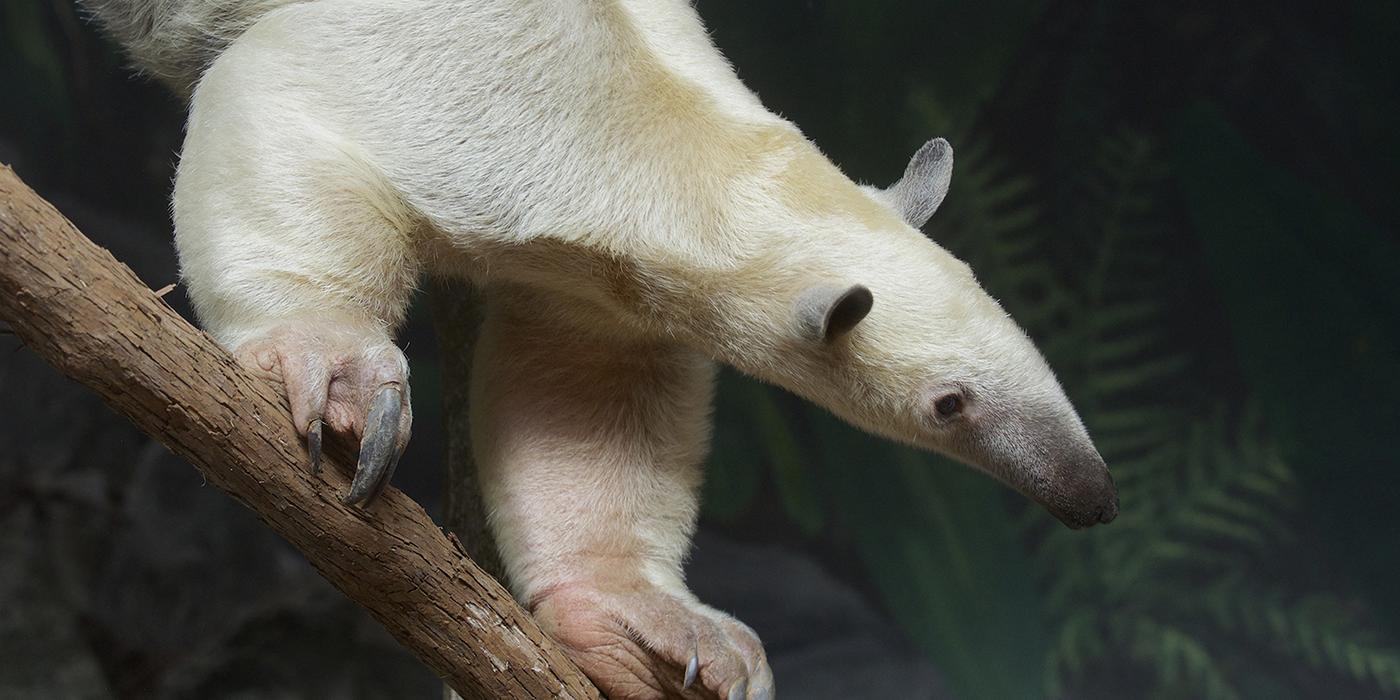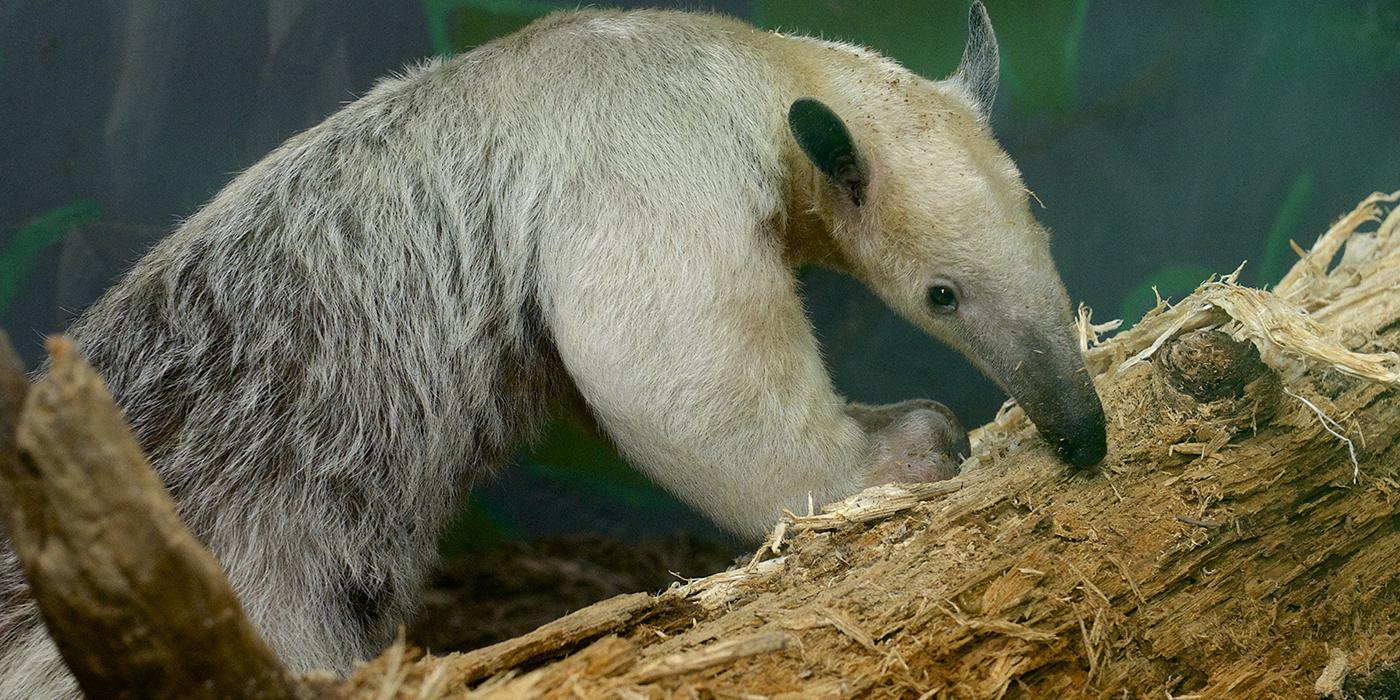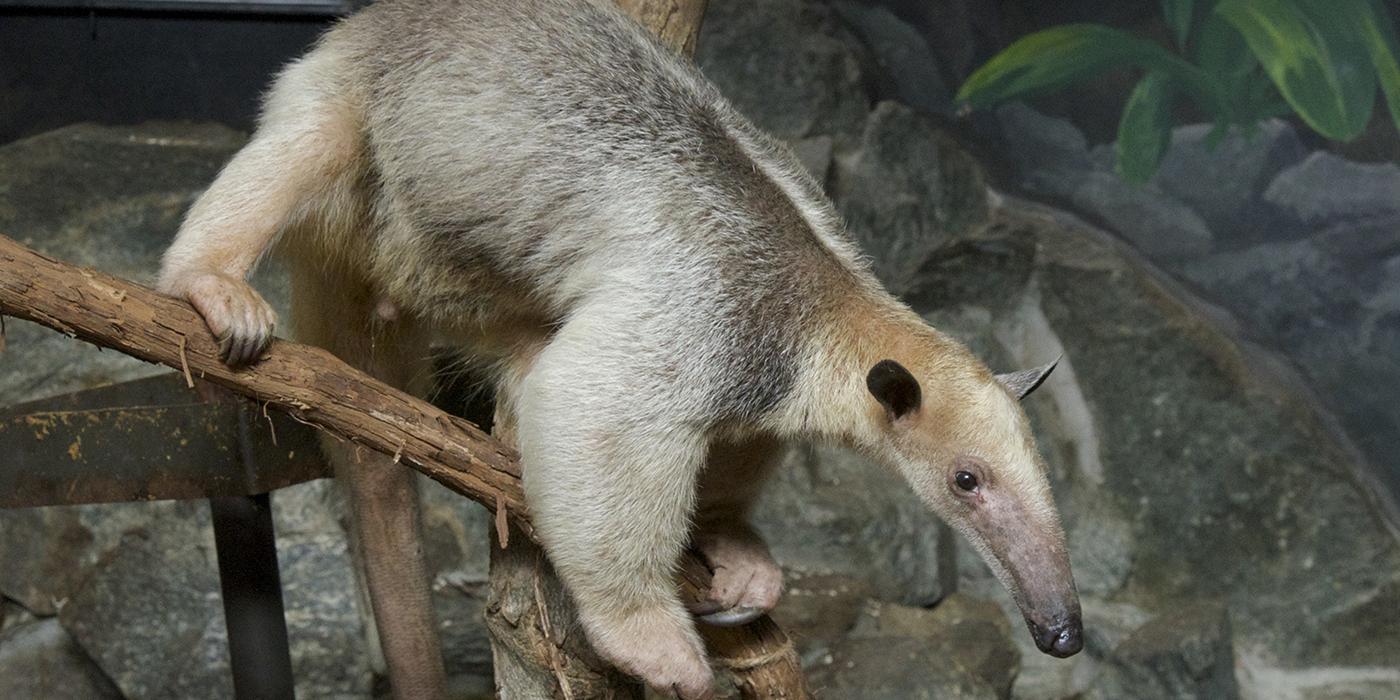Physical Description
Southern tamanduas have short dense fur. Their coat color varies depending on where they live. In the south, they have bold dark markings over their shoulders and back, while the rest of their bodies range from brown to blond. In the north and west, they may have lighter markings or be a solid color—black, brown or blond—and have no markings.
The underside of their tails is fur-less; this allows them to grip tree branches more securely as they move through the trees.
They have large claws, resembling those on the feet of their relative, the giant anteater.
Size
Southern tamanduas are between 21 and 31.5 inches (53.5 to 80 centimeters) in length, with an additional 15 to 23 inch (40 to 59 centimeters) long prehensile tail. This species typically weighs around 10 pounds (4.5 kilograms).
Native Habitat
Tamanduas are found throughout much of South America: throughout all of Guyana, Trinidad and Tobago, Suriname, French Guiana, Brazil, and Paraguay. This species also inhabits parts of Uruguay, Argentina, Bolivia, Peru, Ecuador, Colombia and Venezuela.
An adaptable species, southern tamanduas can be found in forests, savannas, tropical rainforests, scrub forests, and mangroves, but most commonly occur near streams and rivers. They have been documented at elevations reaching 6,500 feet (2,000 meters). When they are not active, tamanduas commonly shelter in tree hollows.
Lifespan
The average lifespan of tamanduas is 9 years.
Communication
Tamanduas hiss and emit an unpleasant odor from their anal glands when threatened or disturbed. They can also defend themselves using their impressive claws and strong forelimbs. If a predator attacks them in a tree, tamanduas stand on their hind legs balancing themselves with their tail, and reach out with their claws and strong arms until the predator approaches. If threatened while on the ground, tamanduas lean against a tree or rock and use their forelimbs to grab potential predators.
Food/Eating Habits
Tamanduas mostly eat arboreal ants and termites, though they also eat honey and bees. They use their forelimbs and claws to excavate insect nests, then use their elongated snout and tongue to slurp up prey. Their tongues can be up to 15.7 inches (40 centimeters) long, while the mouth opening is about the width of a pencil eraser—a mere 0.25 inches (6 millimeters). Tamanduas are toothless species, but have a muscular gizzard in the stomach to help them digest their food.
At the Smithsonian's National Zoo, tamanduas consume insects and a mash of insectivore diet.
Sleep Habits
Researchers believe tamanduas are primarily nocturnal, but they have been observed being active during the daytime as well. Whenever they are awake, they are typically active for an eight-hour period, which they spend mainly looking for food. They move easily in and through trees, but are awkward on the ground. They have to walk on the outside of their feet to avoid puncturing themselves with their long, strong claws.
Social Structure
Aside from breeding, tamanduas are typically solitary animals.
Reproduction and Development
Tamanduas typically mate in the fall, and female tamanduas are capable of having multiple estrus cycles throughout the breeding season. Pregnancy lasts between 130 and 150 days, after which a single offspring is born. Twin births can occur, but are uncommon. As with other species of anteater, mothers carry young tamanduas on their backs throughout the first months of life. Young remain with their mother for about one year before reaching sexual maturity and heading off on their own.
Conservation Efforts
In certain regions, tamanduas are hunted for their meat or skins, which can be made into leather products. They are also collected from their native habitats and sold as pets.
Other hazards include vehicular traffic and wildfires. Like most species, tamanduas are also affected by habitat loss and degradation.
Help this Species
- Be a smart consumer! Avoid animal-skin products, even those marked “faux,” to ensure you’re not contributing to the illegal hunting of this species.
- Choose your pets wisely, and do your research before bringing an animal home. Exotic animals don’t always make great pets. Many require special care and live for a long time. Tropical reptiles and small mammals are often traded internationally and may be victims of the illegal pet trade. Never release animals that have been kept as pets into the wild.
- Are you a student? Did you love what you learned about this animal? Make it the topic of your next school project, or start a conservation club at your school. You'll learn even more and share the importance of saving species with classmates and teachers, too.
Animal News

Leaf-tailed Gecko Treated for Skin Cancer With Chemotherapy





